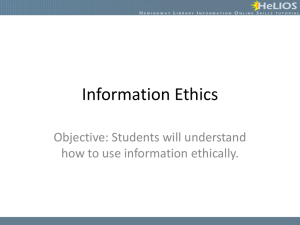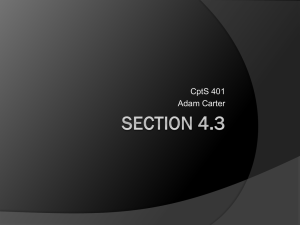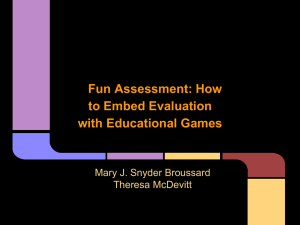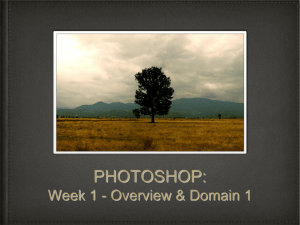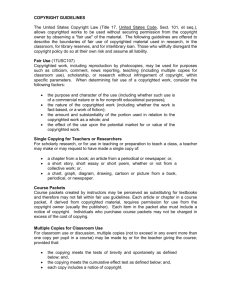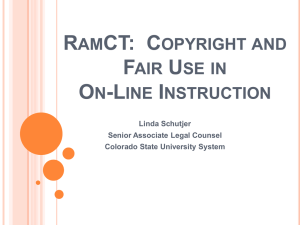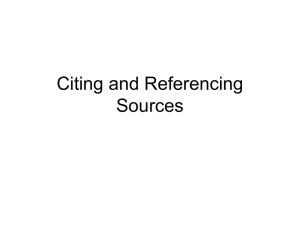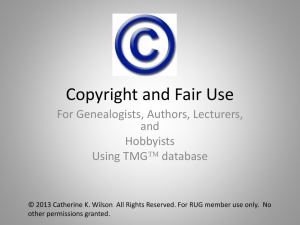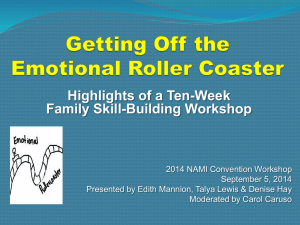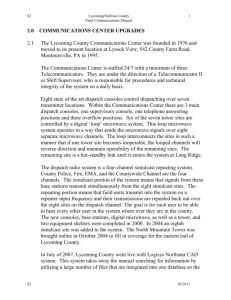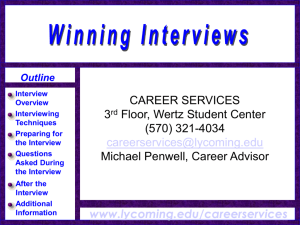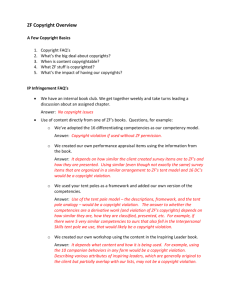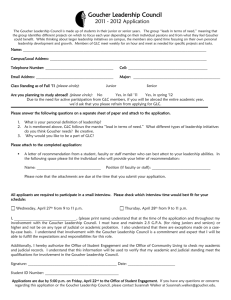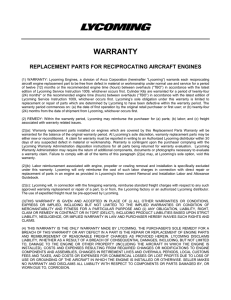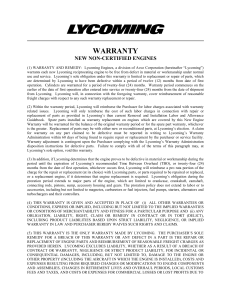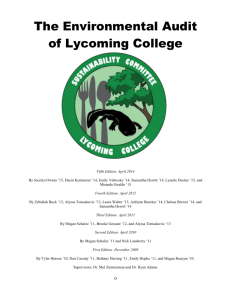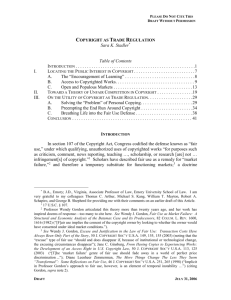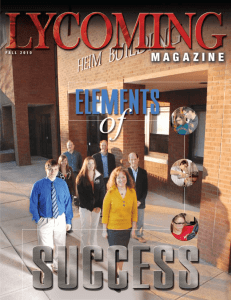Lycoming Copyright Policy Guidelines
advertisement
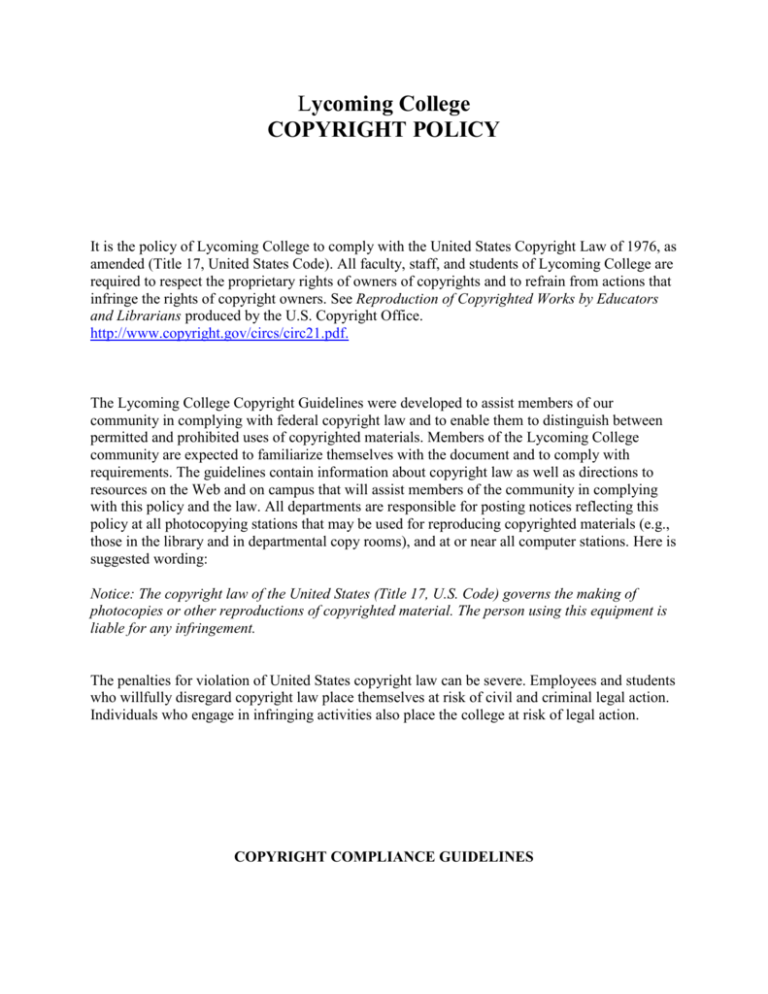
Lycoming College COPYRIGHT POLICY It is the policy of Lycoming College to comply with the United States Copyright Law of 1976, as amended (Title 17, United States Code). All faculty, staff, and students of Lycoming College are required to respect the proprietary rights of owners of copyrights and to refrain from actions that infringe the rights of copyright owners. See Reproduction of Copyrighted Works by Educators and Librarians produced by the U.S. Copyright Office. http://www.copyright.gov/circs/circ21.pdf. The Lycoming College Copyright Guidelines were developed to assist members of our community in complying with federal copyright law and to enable them to distinguish between permitted and prohibited uses of copyrighted materials. Members of the Lycoming College community are expected to familiarize themselves with the document and to comply with requirements. The guidelines contain information about copyright law as well as directions to resources on the Web and on campus that will assist members of the community in complying with this policy and the law. All departments are responsible for posting notices reflecting this policy at all photocopying stations that may be used for reproducing copyrighted materials (e.g., those in the library and in departmental copy rooms), and at or near all computer stations. Here is suggested wording: Notice: The copyright law of the United States (Title 17, U.S. Code) governs the making of photocopies or other reproductions of copyrighted material. The person using this equipment is liable for any infringement. The penalties for violation of United States copyright law can be severe. Employees and students who willfully disregard copyright law place themselves at risk of civil and criminal legal action. Individuals who engage in infringing activities also place the college at risk of legal action. COPYRIGHT COMPLIANCE GUIDELINES The following types of works are protected by copyright and represent original works of authorship that are fixed in a tangible form of expression: 1. Literary works 2. Musical works, including any accompanying words 3. Dramatic works, including any accompanying music 4. Pantomimes and choreographic works 5. Pictorial, graphic, and sculptural works 6. Motion pictures and other audiovisual works 7: Sound recordings 8. Architectural works 9. Computer programs When considering textual works, it is best to assume that anything published after 1920 is protected by copyright, even if it does not contain a copyright notice. Determine whether the work is in the public domain or whether it is protected by copyright. http://copyright.cornell.edu/resources/publicdomain.cfm The holders of a copyright may reproduce the work, prepare derivative works based on the work, distribute copies of the work to the public, and perform and display the work publicly. If you intend to exercise any of these rights with respect to a copyrighted work, you must obtain the owner’s permission to do so. There are some exceptions: Fair Use Doctrine. You may use or copy copyrighted materials without the copyright owner’s permission where such use or copying constitutes “fair use” under the Copyright Act. Determining whether a proposed use constitutes “fair use” involves applying a four factor test established by copyright law. 1. The character of the use (e.g., educational vs. commercial); 2. The nature of the work to be used (e.g., factual vs. creative); 3. The amount of the work to be used and the significance of the section to the whole work; 4. The effect of the use upon the potential market for, or value of, the copyrighted work. It is not always easy to apply this test, and everyone does not always agree on the outcome in any given case. The University of Texas has posted an excellent Web page about copyright. (http://copyright.lib.utexas.edu/copypol2.html). Safe Harbor Rules. Because application of the fair use doctrine does not always yield a clear answer, educational organizations and copyright owners negotiated a set of guidelines to provide some certainty as to what constitutes fair use. Negotiators agreed upon and finalized the first three categories of guidelines (Classroom Copying, Educational Use of Music, and Off-Air Recording of Broadcast Programming for Educational Purposes); these guidelines are part of the legislative history accompanying the Copyright Act of 1976. As part of an attempt to introduce rules for the fair use of electronic materials, industry representatives developed, but did not ultimately agree upon, the remaining three categories of guidelines (Digital Images, Educational Multimedia, and Electronic Reserve Systems). These latter guidelines are not as persuasive as the first three regarding what constitutes fair use. Nevertheless, all six sets of guidelines probably represent the minimum limits of fair use and are intended in this policy to describe a “safe harbor” for users, not to define all possible practices of fair use. It is thus possible that a use may exceed these guidelines, yet still constitute fair use under the Copyright Act. For more detailed information, see the Goucher College Copyright Policy http://www.goucher.edu/x2393.xml. It is important to note that the general principles for classroom copying are as follows: Brevity so as not to constitute a substantial portion of the total work; Cumulative effect so that the copies do not have a detrimental effect on the market. Spontaneity indicates that you lacked adequate time between the decision to use a work and the time needed to gain permission. Reusing material cannot be considered spontaneous. Any use of licensed works must be in accordance with the terms of the license. This will apply most often to software, but may have application to electronic materials and other databases acquired through license. Questions about licensing should be referred to the chief technology officer or to a librarian if it concerns an electronic database. If you need to obtain permission to use a copyrighted work, contact a librarian for assistance and discussion. Allow at least six weeks for permissions to be granted. If you cannot locate the owner of the copyright, it is best to not use the work. Materials on reserve as course readings should be limited in number or password protected with bibliographic information attached or displayed, and include a notice of copyright unless the material is in the public domain. Permission must be obtained for materials that will be used more than one semester by the same instructor for the same course since use will no longer be spontaneous. The preparation of coursepacks is of increasing concern to copyright owners because they view this practice as having a significant impact on the market for these works. A “coursepack” is defined as a collection of readings and other academic supplementary course materials in electronic or print form. The number of copies should be limited or password protected in an electronic environment, and the guidelines for following copyright practices should be carefully followed. Link to materials on the Web rather than reproducing them whenever possible. This applies to the open Web as well as articles in electronic databases. The Copyright Guidance Committee is composed of the provost, the associate dean and director of library services, the instructional services librarian designated as coordinator of copyright issues, the associate dean and chief information officer, the media technology coordinator, a staff member from Student Affairs, the manager of the Campus Store, and a faculty member. These individuals provide oversight for copyright compliance on campus and plan educational activities to help familiarize faculty and students about copyright guidelines. The Committee will review college copyright policy on an annual basis. For further information, copyright best practices, and policies consult http://www.lycoming.edu/library/about/copyright.html and http://www.lycoming.edu/its/policiesAndProcedures/. Portions of this document were adapted with permission from the Goucher College Copyright Policy. Approved Faculty Library Advisory Committee, March 2012 Approved Board of Trustees, April 2012
